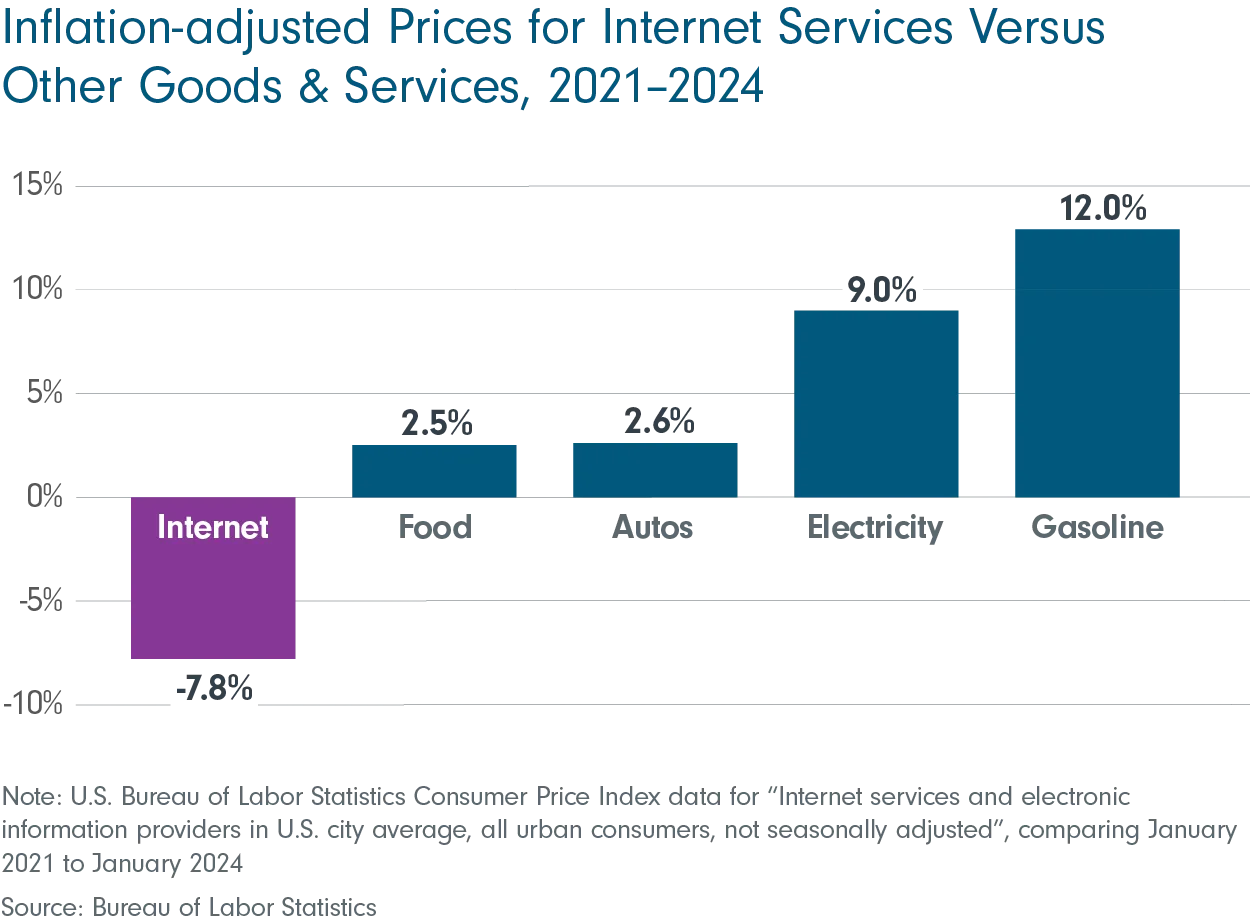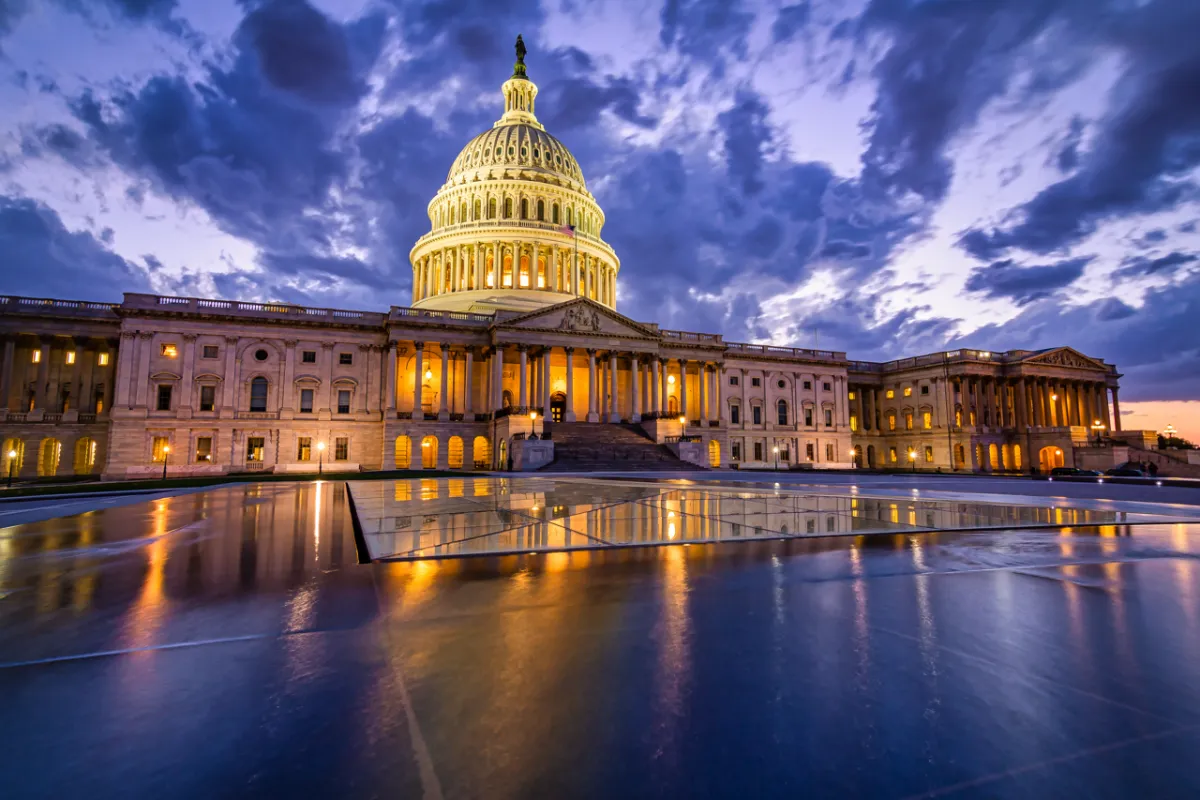In his State of the Union address to the nation tonight, President Biden will acknowledge that Americans are facing inflationary pressures when it comes to groceries, energy bills, and rent costs.
One household staple, however, has notably bucked this trend: home internet service. Adjusted for inflation, consumers paid 7.8% less for broadband services in January than three years ago.

Meanwhile, average broadband speeds have surged more than 40%. In fact, controlling for the exponential increase in speeds, the real cost-per-megabit for broadband service offerings has declined by roughly 80% since 2015.
This broadband success story stems directly from a boom in private investment – more than $100 billion in 2022 alone – which is helping to fuel an unprecedented surge in competition between rival providers and technologies:
- Cable providers are investing heavily to roll out multi-gigabit speeds on the road to 10G.
- Fiber providers are expanding their footprints, adding 9 million new passings last year alone.
- Fixed wireless providers added more than 3.5 million subscribers 2023.
- Amazon’s Project Kuiper will soon join Starlink in offering high-speed service via low earth orbit (LEO) satellites.
Roughly three in four U.S. consumers have multiple choices for fixed broadband service. Even at ultra-fast (100 Mbps or faster) speeds, 60% of Americans have multiple choices for wired broadband — and this share has tripled since 2016.
America’s broadband providers have brought gigabit-speed service to the doorsteps of 89% of American homes and businesses, delivering speeds 2.5 times faster than the global median, even as American consumers generate more than twice the average data traffic of Europeans. It’s no wonder 85% of American consumers give their broadband service a positive rating.
The success of America’s booming broadband marketplace – in stark contrast to America’s chronically under-invested, utility-regulated electric grid and water systems – offers a clear reminder to policymakers: free market competition, rather than investment-chilling overregulation, will deliver the best outcomes for consumers.









